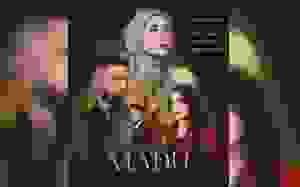Essential Jaguar E Type Parts Every Classic Car Owner Needs
The Jaguar E-Type has become one of the most acclaimed cars in the history of automobile manufacturing, and since its debut in 1961, it has attracted a devoted fan base. It was deemed by Enzo Ferrari himself as the most beautiful car of all and it was no wonder. The E-Type is not a vehicle, it is a piece of art. Its smooth lines, solid inline-six engine, and classic design make it a masterwork on wheels. There are responsibilities, though, of owning such a classic. These icons grow old, and therefore, when it comes to keeping them, it involves finding the correct parts to ensure they remain authentic and their performance, as well as value, is not lost. That is where professional vendors come into the picture, as they can sell you not only Jaguar E-Type parts but also keep your full-scale shipment running on the open highway.
In this overall manual, we will explore further into the Jaguar E-Type components that every vintage car owner must have. The components are non-negotiable in terms of safety and reliability, and also that Series 1 roadster, or Series 3 V12 coupe, is not going anywhere without these parts to achieve that typical E-Type driving experience. We will divide it category by category, reason why each part is important, and give you tips on choice and installation. You will have a road map at the end of it on how to maintain your E-Type in concours without straining the wallet.
Table of Contents
The Heart of the Beast: Engine and Cooling System Essentials
Chassis and Suspension: Handling Like It Did in ’61
Body and Trim: Preserving the Iconic Silhouette
Interior Comfort: Leather, Wood, and Luxe Touches
Electrical and Exhaust: Reliability Meets Performance
Transmission and Drivetrain: Smooth Power Delivery
Why Source Quality Parts? The Long-Term Payoff
Conclusion: Keep Your E-Type Eternal
The Heart of the Beast: Engine and Cooling System Essentials

Jaguar E-Type V12 – 1961
There is no E-type discussion that is complete without one beginning under the hood. Its classic 3.8 liter or 4.2 liter XK inline-six (or subsequent 5.3 liter V12) requires components that are as precise as the British engineering of the car. A faulty engine part will reduce a tune of revs to sound like knocks, so focus on the following:
Carburetors and Fuel System Components: The early triple SU carburetors are temperamental yet produce that throat clearing roar. Other required replacements are rebuild kits to the HD6 or HD8 carbs including gaskets, needles, and jets. Why essential? Modern fuel that contains ethanol decays originals resulting in lean mixtures and loss of power. Use brass jets to prevent corrosion- either way it will cost around 200 to 500 dollars to install a complete kit. Installation tip: Adjust the carbs even after rebuilding with a vacuum gauge.
Ignition System Upgrades: In classics, ignition systems easily wear out in terms of points, condensers, and distributors. The current electronic ignition conversion kit (such as the Lucas-style units) has combusted the failure of points and enhanced the reliability of the spark. Use it with high-performance spark plugs and leads. This upgrade will be able to increase the starting ease by half, and shorten the maintenance intervals to 20,000 miles instead of once every 5,000 miles. Cost: Around $300–$600.
Radiator and Hoses: It is a typical E-type plague, particularly in traffic. It must be a radiator of high efficiency, aluminum, with an electric fan shroud—lighter than the old one and radiating more quickly. Remember silicone hoses, which are not only flexible and non-heating but also have been in service for many decades, unlike rubber. Total investment: $400–$800. Best tip: Once every year, run a citric acid solution through the system and it will prevent the formation of scale.
Oil Filter and Pump Rebuilds: The wet sump system of the E-type is based on a powerful oil pump. Rebuild kits are fitted with modern bearings to give constant pressure and spin-on adapters make changing filters simple. Necessary to eliminate bearing wear in high-mileage engines.
In addition to these, valve cover gaskets and timing chain tensioners should be taken into consideration in order to solve the frequent leaks and rattles. Using well-known suppliers will provide OEM-grade materials and not some low-cost imitations, which compromise tolerances.
Chassis and Suspension: Handling Like It Did in ’61

Chassis and Suspension
The independent suspension used in the E-Type was groundbreaking, however, 60 years later, most of them have become wobbly cruisers due to the use of bushings and shockers. To fix the ride, specific components are required:
Bushings and Mounts: Polyurethane bushings on the wishbones in the front and the radius arm in the rear minimize slop without being as hard as full race. They are sunproof and do not squeak like rubber. Replacement set: $150–$300. Why now? Badly worn bushings lead to uneven wear on tires and sloppy steering–safety first.
Coil Spring and Damper Kits: The reduced weight distribution of 50/50 is retained with Bilstein shocks and Eibach lowered springs but the cornering is enhanced. Ride height is adjustable to that ideal position. Expect $500–$1,000 for a full kit. Installation: Lay after to prevent camber.
Steering Rack and Tie Rods: The rack-and-pinion system is accurate, however, it is subject to play. Wander is removed by rebuilt racks having new seals. Install quick-ratio tie rods to sharpen.
Brake System Overhaul: Disc brakes were ahead of their time, although calipers grabbed and hoses burst. There are required girling rebuild kits, stainless lines and high-friction pads. Install vented rotors in case of spirited drives. Full system refresh: $600–$1,200.
These improvements allow the handling to be like your E-Type, and the car cuts and turns corners like a modern sports car whilst still having the grand tourer feel.
Body and Trim: Preserving the Iconic Silhouette

1961 Jaguar E-Type, Iconic Silhouette
The aluminum body plates and chrome embellishments that characterize the E-Type make up its beauty, but toxins such as rust and dents during storage are unavoidable enemies.
Panel Repairs and Seals: Door skins, fender flares, and rocker panels in genuine aluminum repair sections. Door weather stripping and the recognizable long hood eliminate leakages. A full seal kit runs $200–$400.
Chrome and Trim Kits: Bumper overriders, grille surrounds and wire wheel spinners are made of triple plated chrome that does not pit. For authenticity, match to Series 1 brightwork specs.
Glass and Mirrors: Laminated date-coded windshields and convex door mirrors. Colored side glass will provide UV protection and will not change the appearance.
Paint and Protective Coatings: Cavity wax and underbody sealants are considered to be essential parts, although they are not actually parts. Use after restoration to be long-lasting.
There is resale value in investing here, a clean body can increase the price tag of an E-Type to the tune of an extra 20,000 dollars.
Interior Comfort: Leather, Wood, and Luxe Touches

The E-Type is a blend of sport and luxury which can be spoiled easily with fading leather and broken dashboards, inside.
Seat Upholstery and Foam: Connolly leather hides in OEM colors, with high-density foam bases for support. Full re-trim: $1,000–$2,500.
Dashboard and Wood Veneer: Walnut burr dashboards with correct grain patterns, plus glovebox hinges and switches.
Carpet Sets and Headliners: Cut-pile Wilton carpets and mohair headliners in black or tan. Insulate underneath for noise reduction.
Gauge and Electrical Bits: Smiths chronometric tachometers and Lucas lighting switches. LED conversions modernize without visible changes.
These restore the cabin to factory-fresh, enhancing long-drive comfort.
Electrical and Exhaust: Reliability Meets Performance
Wiring harnesses are brittle with age, and the exhaust’s burble fades with rust.
Full Wiring Loom: Cloth-insulated reproductions prevent shorts. $800–$1,500.
Exhaust Manifolds and Silencers: Stainless systems for corrosion resistance and deeper tone. Catalytic converters for emissions compliance.
Battery and Alternator: Lightweight lithium batteries and high-output alternators support accessories.
Transmission and Drivetrain: Smooth Power Delivery
The Moss gearbox or automatic needs synchros and seals; diffs require oil and bearings.
Clutch Kits: Organic discs for smooth engagement.
Propshaft and U-Joints: Balanced units reduce vibration.
Why Source Quality Parts? The Long-Term Payoff
Low-quality components will result in a high rate of breakdowns; high-quality ones, such as those supplied by Jaguar Parts Specialists will give the vehicle sufficient fit and life. Frequent upkeep- changing oil after every 3,000 miles and the suspension checks after every six months—increases the life of your old-timer.
Conclusion: Keep Your E-Type Eternal
Owning an E-Type is a passion project. With these essentials, you’ll honor its legacy while enjoying modern reliability. Start with engine basics, then tackle suspension and body. Your cat deserves the best—prowl confidently.
from Auto Blog | Latest Car News and Reviews, Trucks, Bikes, and Motorcycles https://ift.tt/ZzqVwlc
Artikel ini hanyalah simpanan cache dari url asal penulis yang berkebarangkalian sudah terlalu lama atau sudah dibuang :
http://autobikeblog.blogspot.com/2025/10/essential-jaguar-e-type-parts-every.html
 PING BABAB : Raksasa Aggregator Malaysia
PING BABAB : Raksasa Aggregator Malaysia
 Jaguar E-Type V12 – 1961
There is no E-type discussion that is complete without one beginning under the hood. Its classic 3.8 liter or 4.2 liter XK inline-six (or subsequent 5.3 liter V12) requires components that are as precise as the British engineering of the car. A faulty engine part will reduce a tune of revs to sound like knocks, so focus on the following:
Jaguar E-Type V12 – 1961
There is no E-type discussion that is complete without one beginning under the hood. Its classic 3.8 liter or 4.2 liter XK inline-six (or subsequent 5.3 liter V12) requires components that are as precise as the British engineering of the car. A faulty engine part will reduce a tune of revs to sound like knocks, so focus on the following: Chassis and Suspension
The independent suspension used in the E-Type was groundbreaking, however, 60 years later, most of them have become wobbly cruisers due to the use of bushings and shockers. To fix the ride, specific components are required:
Chassis and Suspension
The independent suspension used in the E-Type was groundbreaking, however, 60 years later, most of them have become wobbly cruisers due to the use of bushings and shockers. To fix the ride, specific components are required: The E-Type is a blend of sport and luxury which can be spoiled easily with fading leather and broken dashboards, inside.
The E-Type is a blend of sport and luxury which can be spoiled easily with fading leather and broken dashboards, inside.























